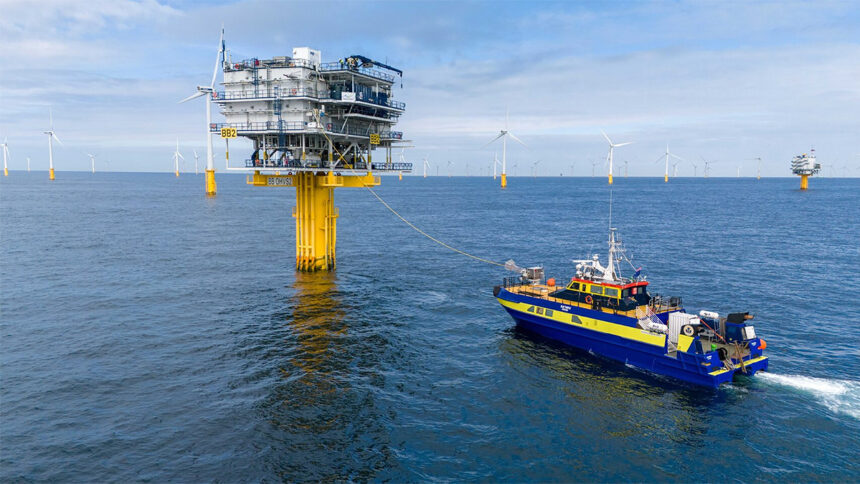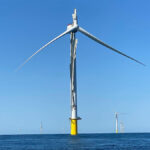The Belgians have inaugurated the world’s first offshore station for charging electric ships with power coming directly from nearby wind turbines
Engineers at Belgian company Parkwind have built and inaugurated the world’s first offshore station for charging electric ships, with electricity coming directly from nearby wind turbines. The station is located in the Nobelwind offshore wind farm area, 47 km off the Belgian coast in the North Sea.
The need for such an offshore charging station is driven by the desire of companies that maintain wind turbines to operate electric vessels, as this would allow them to have a CO2 impact that would go towards zero, and this impact would also tip the balance of wind farm operators towards lower figures, as they could then benefit from bonuses for high operating standards. Last November we also wrote about the fact that the Dutch at Damen had also created the world’s first electric vessel designed specifically for wind turbine maintenance, and that vessel already had the idea that it would be charged offshore while the crew was working on the maintenance of a wind farm. Just such a station, for just such a purpose, has now been built by Parkwind.
The new charging station was developed together with the British company MJR and has an automatic charging port connection system for electric ships. Vessels of this type usually also have small transverse propeller motors, which ensure their active stability while at anchor at such a wind farm, and the station is programmed to allow the vessel to operate these stabilized motors while plugged in.Before the inauguration, the system was tested in multiple conditions, including bad weather, and showed a 100% operation rate with no failures. And the charging station has a connection to a module in the wind farm’s electricity grid, being able to directly draw electricity without causing major imbalances for the wind farm and the power transmitted to shore.The Noblewind Marine Park, where this first charging station is located, was inaugurated in 2017, and would 50 turbines, which together produce 165 MW, each turbine having 3.3 MW of power. In today’s parameters, a 3.3 MW output for a maritime wind turbine is laughably small, but that just goes to show the major evolution that maritime wind turbines have undergone, from 3.3 MW for a park inaugurated in 2017 to 15-16 MW turbines today, and in China already 18 MW, with the announcement of a 22 MW one.The new charging station can provide two types of connections more commonly used today, with either 2 MW or 8 MW of power delivered. This is a significant amount of power when compared to the 3.3 MW power of each turbine.Both pure electric battery-powered ships and those with electric autonomy will be able to charge here, as well as those with diesel generators as back-up, minimizing emissions by avoiding the need to start the generators.In theory, the new electric station could also charge any other type of ships that pass through here, except that there are no electric ships sailing these routes in normal operation at the moment. But Parkwind have caught on to the idea of charging stations at sea and say they could build more such stations in the coming years, forming the basis of a future network.







